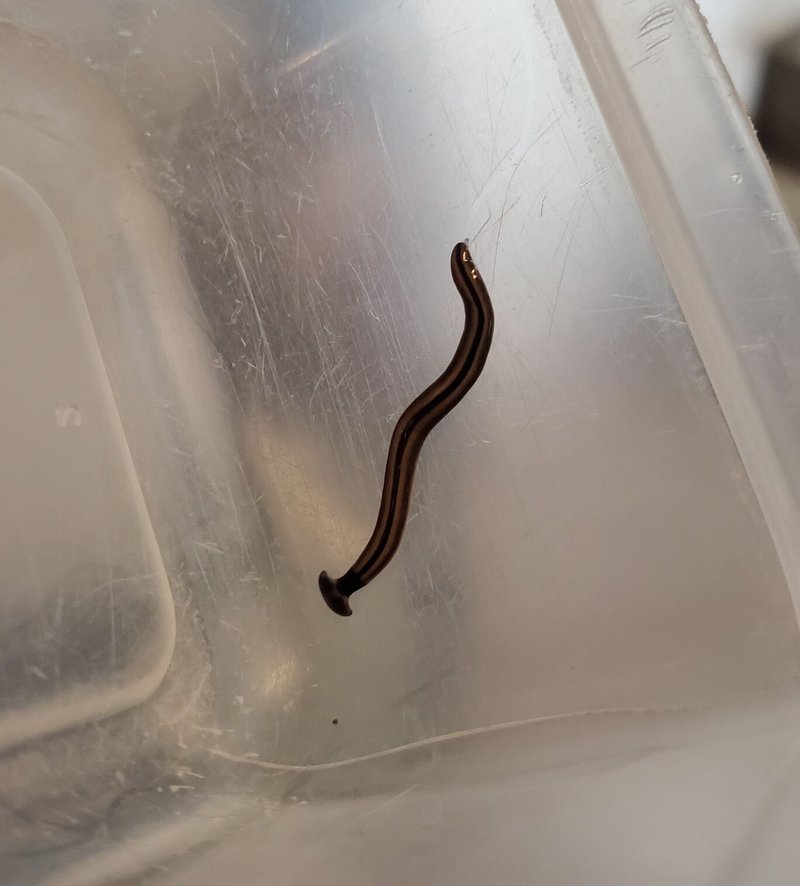
Imagine you discover these worms in your pots and think, “Uh-oh, what now?” Before you panic, let’s chat about how to spot them, why they like your plants, and—most importantly—how to prevent their unwelcome arrival. It’s like inviting a guest over who doesn’t know when to leave; you want to make sure your home is worm-free and your plants thrive!
What Are Hammerhead Worms?
Hammerhead worms belong to a group of flatworms known as *Bipalium*. Unlike their garden-dwelling cousins, these creatures are primarily tropical and can be found in warm, humid environments, including indoor potted plants. You might be wondering why they have such a peculiar name. Well, their head resembles a hammer or, more accurately, a spade, which gives them quite a distinctive look.
These worms can grow up to a foot long and are typically striped in shades of brown or gray. While they don’t pose a direct threat to humans or pets, they can harm your plants by feeding on their roots and occasionally their leaves. So, spotting one can feel like finding an unwelcome surprise in your favorite dessert!
Why Do Hammerhead Worms Love Indoor Plants?
You’re probably curious about why these worms find your indoor plants so appealing. Well, hammerhead worms thrive in moist environments, and what better place to find that than cozy, potted plants? Indoor plants create an ideal habitat with the right humidity, temperature, and organic matter that keeps these pests happy.
Additionally, if you’ve been overwatering your plants, it can lead to excess moisture in the soil. This isn’t just a problem for the plants; it creates a perfect breeding ground for hammerhead worms. They love the dampness, and if your plant care techniques aren’t on point, these little critters might just move in!
How to Identify Hammerhead Worms in Your Plants
Identifying hammerhead worms is essential for effective prevention. Look for these telltale signs:
- Appearance: They have a flat, elongated body with a broad, head that resembles a hammer.
- Color: The worms may vary in color, but you’ll commonly see them in shades of brown, gray, or even black.
- Size: They can grow up to 12 inches long, so if you spot a long, flat worm, you’re likely dealing with a hammerhead.
- Behavior: Watch for them moving slowly across the soil or leaving a slime trail behind.
Spotting them early is key. If you notice one, it’s usually an indication that more could be lurking. Think of it like finding one cockroach; where there’s one, there are often more hiding!
Preventing Hammerhead Worms in Your Potted Plants
Now that you know what to look for, let’s dive into some practical prevention tips. Here’s how to keep your indoor plants safe:
- Maintain Proper Watering: Overwatering is a big draw for these worms. Check the soil moisture before watering your plants; stick your finger in the soil about an inch deep. If it’s still damp, hold off on watering.
- Repotting and Soil Management: When changing pots or refreshing the soil, use sterile potting mix. This reduces the chance of introducing worms or their eggs.
- Natural Predators: Encourage beneficial insects, like nematodes, which can help keep hammerhead worms at bay. You can add beneficial nematodes to your garden soil or potting mix.
- Avoid Contaminated Materials: If you’re using compost or soil from outdoors, ensure it’s from a clean source to limit introducing any pests.
If you take these steps, you’ll significantly decrease the chances of hammerhead worms making themselves at home in your plants.
What to Do If You Find Hammerhead Worms
If you’ve already spotted hammerhead worms in your indoor plants, don’t worry! Here’s what to do next:
1. **Remove the Worms Manually:** Use gloves to pick them out of the soil. It’s best to do this outdoors if possible.
2. **Adjust Your Watering Habits:** Reflect on your watering schedule to prevent future infestations.
3. **Consider Soil Treatments:** There are natural soil treatments available that can help eliminate worms without harming your plants.
4. **Monitor Plant Health:** Keep an eye on your plants for any signs of distress. If they’re wilting or showing signs of nutrient deficiency, adjust your care routine accordingly.
By taking action quickly, you can keep your plant family safe from these quirky invaders.
Understanding the Risks of Hammerhead Worms
You might be asking yourself, “Are hammerhead worms really that bad for my plants?” Well, yes and no. While they’re not going to wipe out your entire indoor garden overnight, they can cause some significant damage over time. They feed on roots, which can stunt plant growth and even lead to death if left unchecked.
These worms also reproduce quickly, making it essential to tackle any infestations early. It’s kind of like letting a small weed grow in your garden. At first, it doesn’t seem like a big deal, but before you know it, you have a jungle of weeds overshadowing your healthy plants!
Maintaining a vibrant indoor garden comes with its challenges, and dealing with hammerhead worms is one of them. However, with a proactive approach and a little knowledge, you can prevent these bizarre creatures from taking over. Remember, keeping your soil healthy and monitoring your watering can make a world of difference.
So, the next time you’re tending to your plants, think about the little things you can do to keep them happy and worm-free. After all, your indoor plants deserve the best care possible, and you’ll enjoy the fruits of your labor (and the beauty of your plants) even more knowing they’re safe from these odd invaders!

